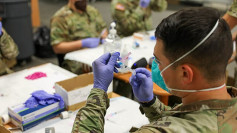In recent years, brain scans for symptoms such as headaches, cognitive disorders, or dizziness have become more common. But physicians often discover an unusual illness in search of a suspicious condition: silent strokes.
These strokes, which doctors say affect 8 million to 11 million Americans per year, do not cause symptoms but occur on scans as white spots, scarred skin from a blockage or tiny patches of leaking vessels, and, according to recent guidelines from the American Heart Association / American Stroke Association.
The unintended results should be taken seriously, but there is not enough literature on these symptomless strokes to justify mass screening for them.
If there are questions about neurological problems such as fatigue or speech difficulties, it is important to go to the family doctor because silent strokes place individuals at risk not only for potential symptomatic strokes but also for cognitive impairment and dementia.
According to the statement, MRI is better at detecting silent strokes. To investigate questions about memory and cognition, stroke, dizziness, unusual headaches, or Parkinson's disease, the use of brain imaging has grown significantly over the years.
Silent strokes are much more widespread than strokes that cause typical symptoms such as drooping of the forehead, stiffness of the arm, and difficulties in talking, affecting almost 800,000 Americans each year.
While usually there are no visible signs of neurological disorders, specialists said a thorough medical history often shows imbalance or clumsiness in a limb that lasted a few days before getting better. But never did that person go to the hospital.
The patient should be examined following an irregular brain scan for risk factors believed to lead to blockages in the blood vessels and vascular weaknesses of the brain or other areas of the body, the declaration recommends. High blood pressure, diabetes, high cholesterol, and smoking are such causes.
It is therefore important to screen these patients for atrial fibrillation. AFib is a form of irregular heartbeat that may contribute to blood clots that cause stroke.
The problem here is that when we become older, people's memories change, and as doctors and patients, we fail to distinguish what could be expected to get older and what might be the symptom of a brain disorder.
Further studies should focus on understanding how the likelihood of heart attacks and strokes is affected by silent brain disorders.
Using brain scans in clinical trials may also demonstrate whether such treatments help avoid silent strokes. The challenge is that identification involves expensive MRI scans that use strong magnets that make the procedure ineligible for people with metal equipment or who are claustrophobic.
We will raise consciousness among clinicians and patients by shedding more light on this issue.






